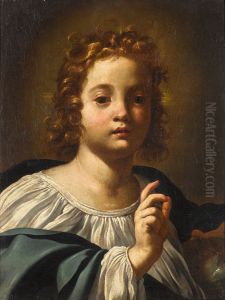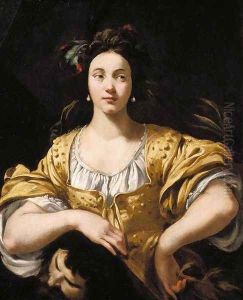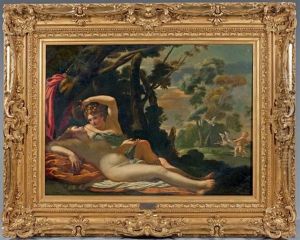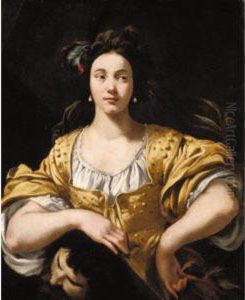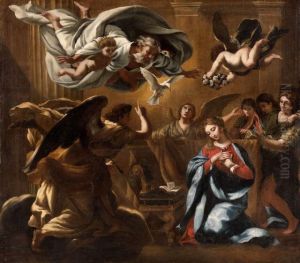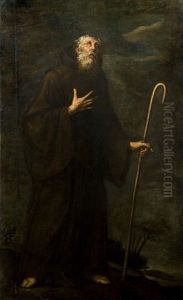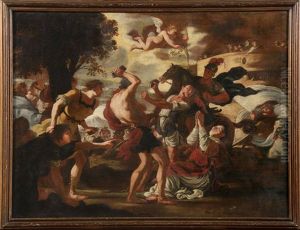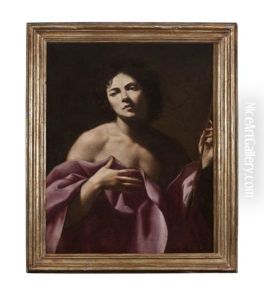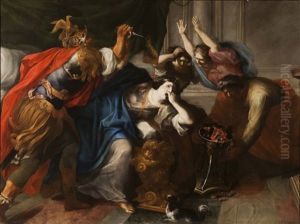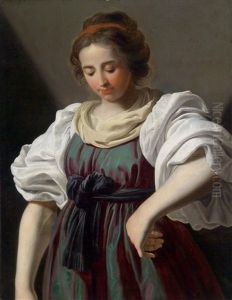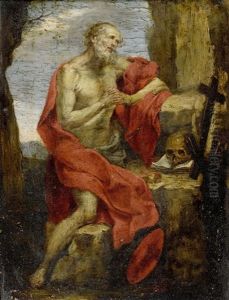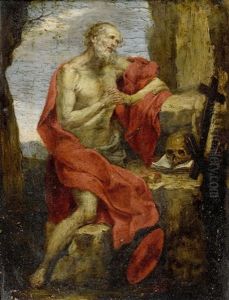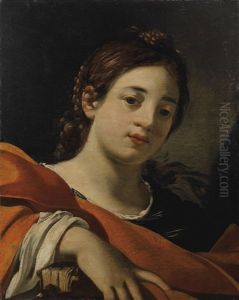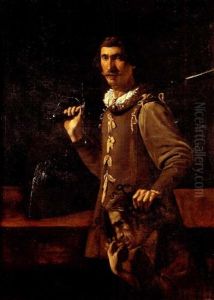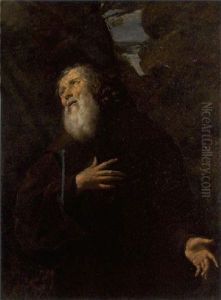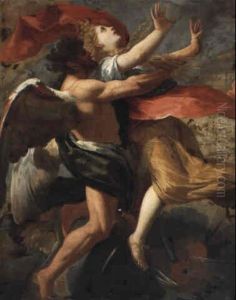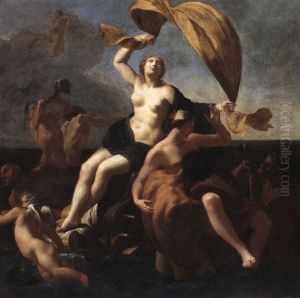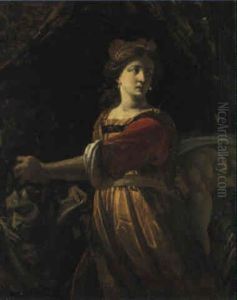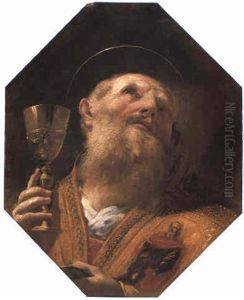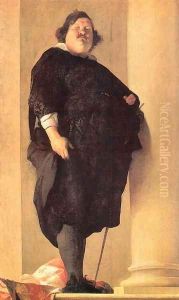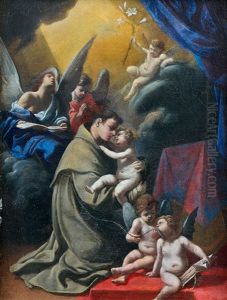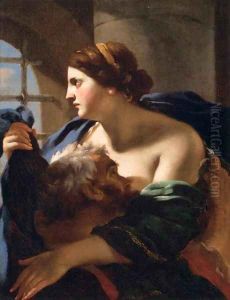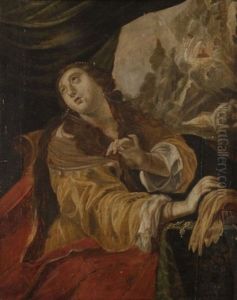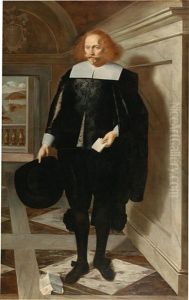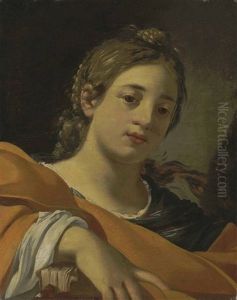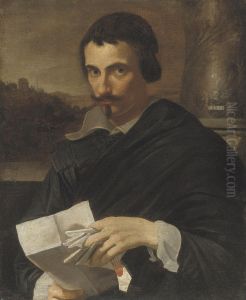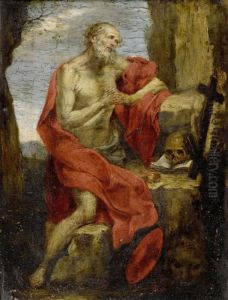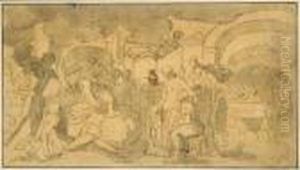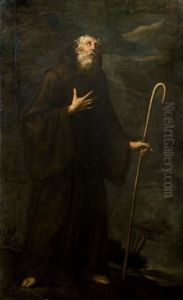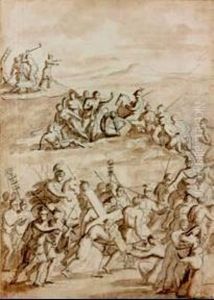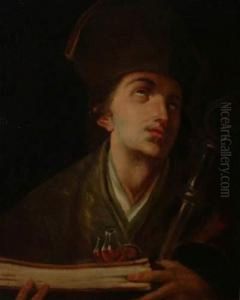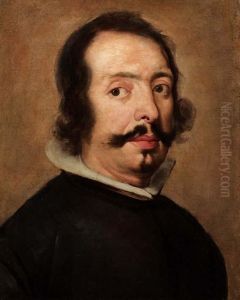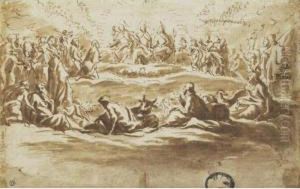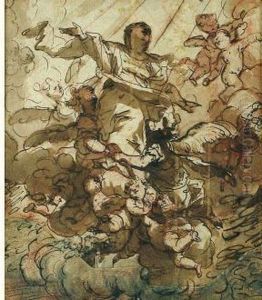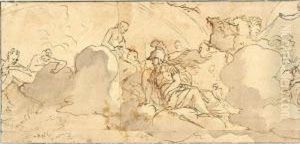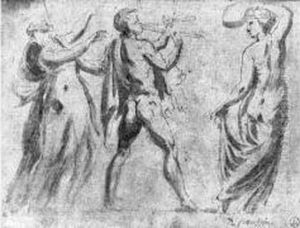Charles Mellin Paintings
Charles Mellin was a French painter, draughtsman, and architect, whose work played a significant role in the early Baroque period. Born in Nancy, France, in 1597, Mellin is often associated with the Lorraine region, though he spent a considerable part of his career in Italy. His move to Italy was pivotal, as it exposed him to the vibrant Italian art scene of the early 17th century, significantly influencing his artistic development.
Mellin's early work in Italy saw him absorbing the influences of the Carracci family and other leading lights of the Roman and Neapolitan art scenes. He was particularly drawn to the dynamic compositions and dramatic use of light and shadow that characterized the Baroque movement, elements that would become hallmarks of his own style. Despite his French origins, Mellin's work is deeply embedded in the Italian Baroque tradition, and he is often considered more of an Italian artist than a French one in art historical discussions.
One of Mellin's most notable contributions to art was his adeptness at integrating architectural elements with his paintings, a skill that made him a sought-after artist for church commissions. His frescoes and altarpieces are celebrated for their spiritual intensity and their ability to convey complex theological ideas through visual means. Mellin's work was not confined to religious subjects, however; he also produced a number of portraits and mythological scenes, showcasing his versatility as an artist.
Despite his success, Charles Mellin remains a somewhat obscure figure outside of specialist circles, overshadowed by his contemporaries like Caravaggio and Bernini. Nevertheless, his work has been subject to renewed interest and appreciation in recent years, with art historians recognising his contributions to the Baroque movement and his unique position as a bridge between French and Italian artistic traditions.
Mellin's career in Italy was predominantly based in Naples, where he died in 1649. The city was a fitting backdrop for his talents, offering a vibrant artistic community and a wealth of commission opportunities. Today, his works can be found in various Italian churches and museums, standing as a testament to his skill and creativity. Mellin's legacy, though understated, is an important chapter in the narrative of Baroque art, reflecting the cross-cultural exchanges that enriched European art during the 17th century.
